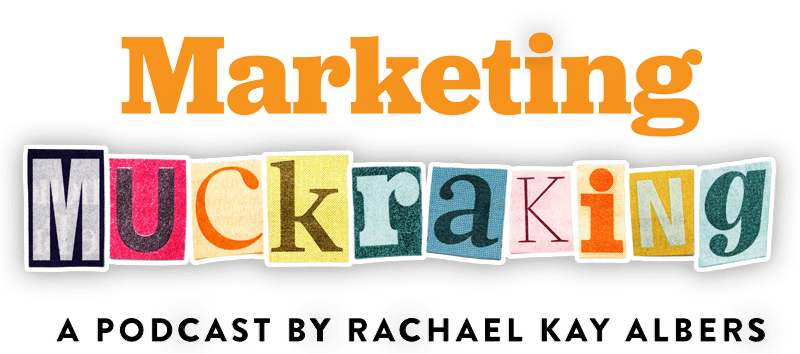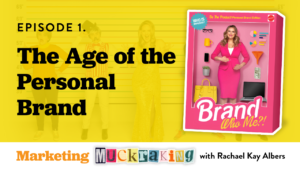How did we get here? What is the history of gun culture and marketing in the USA?
Why are so many young men turning 18 and going to buy a gun? And what can we do about it?
Just like tobacco companies targeted kids to create a market of “replacement smokers,” so do gun manufacturers.
Boys as young as 6 are targeted with ads conflating guns with masculinity, so that by the time they turn 18, the seed has been planted.
This helps answer the question, “Why would a young man turn 18 and go buy a gun?”
He has been sold guns since childhood.
The history of marketing guns as an emblem of masculinity goes back to the 1800s.
But conflating guns with freedom and patriotism started with colonization and the founding of the USA.
In 1791, Congress ratified the Bill of Rights and the Second Amendment.
But, while today's narrative tells us that "the right to bear arms" was to secure the American people against government tyranny, there is more to the story.
According to Emory University Professor Carol Anderson, PhD, who describes the amendment as a "bribe," the Second Amendment was ratified with the warning that if there would ever be a slave revolt, the feds would not step in.
Guns were positioned as protection for Southerners and their property against a slave uprising, which is why Anderson calls the Second Amendment "steeped in anti-Blackness."
But even after the Bill of Rights was ratified, most Americans didn't own guns.
Guns were expensive. They had to be custom made for each buyer.
The Industrial Revolution changed that.
Not only did Eli Whitney invent the cotton gin, he also developed technology that helped produce interchangeable rifle parts — a key element of mass producing guns.
Guns were standardized and mass produced for the Civil War, leaving surplus that needed selling.
Manufacturers needed marketing to offload their guns — and justify producing more.
This is when catchy slogans like this one from Colt were born:
"God created man, Sam Colt made them equal,” a phrase that would become a favorite of gun lovers throughout history and today.
Gunmakers aimed their advertising at white men and their fears of life after slavery was abolished.
These same men brandished guns to intimidate newly freed slaves, telling them not to vote — and often killing them if they did.
But gun manufacturers didn't care: there was no regulation around gun marketing or sales, so they continued on, convincing general stores to stock guns next to oats and patent medicines, telling boys and their parents that owning a rifle would help them cultivate "sturdy manliness."
We look back on this time with tall tales of gunslingers and the "Wild Wild West," romanticizing early gun ownership as that of frontiersmen and "Cowboys and Indians," linking guns to Annie Oakley and Buffalo Bill. But the truth is, frontier towns had the strictest gun laws.
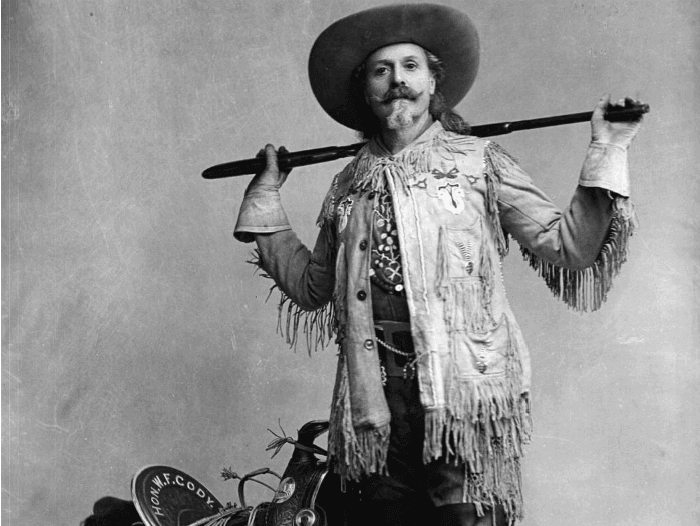
The idea that guns were for cowboys and westward pioneers is a myth linked to the American narrative of manifest destiny and rugged individualism.
In the early 20th century, the Winchester Repeating Arms Co. created the “boy plan” to reach 1 million boys between ages 10 and 16. “Every real boy wants a Winchester rifle,” read the slogan.
Later marketing campaigns told parents, "Your boy should be taught to shoot" and that a rifle of his very own would give him "the proper start" in life. Ads linked gun ownership and father son bonds, with photos of smiling dads and lads creating memories, rifles in hand.
An internal sales letter from Winchester states that, “When the boys and girls of your town arrive at the age of twelve years old, they become your prospects,”
Gun marketing continued unregulated for much of the 20th century. It wasn't until 1934 that the first gun control act passed.
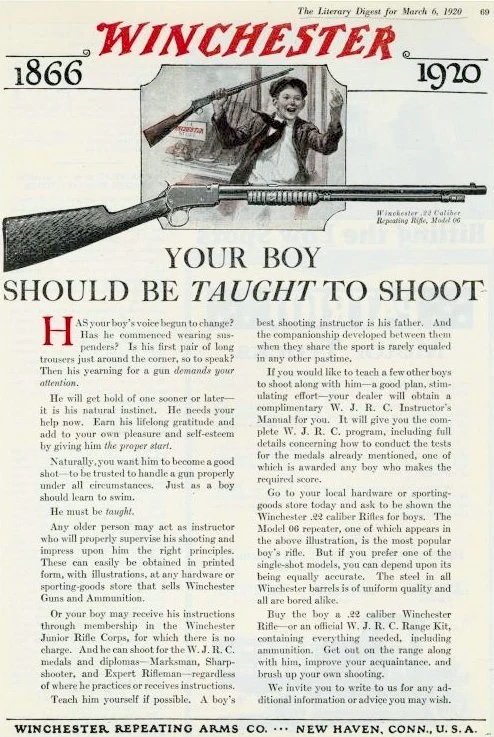
Flash forward to the early 2000s, when gun ownership was waning and the market of white men who saw guns as emblems of freedom was aging, Remington created the “Man Card” campaign to spotlight the AR-15 — the rifle used in the Sandy Hook massacre.
The campaign told young men that if they didn’t “man up” (and buy a rifle) their “man card” would be revoked.
In February 2022, the parents of the Sandy Hook victims won a landmark $73 million dollar lawsuit against Remington for specifically targeting young men in their marketing. Remington now has to open its books and internal letters and show us exactly how it targeted young people with its ads — like Westinghouse's early 20th century letter about its "boy plan" — but it has yet to do so.
Up until February 2022, firearm manufacturers had blanket immunity from liability for the crimes committed with their products, regardless of how they marketed them.
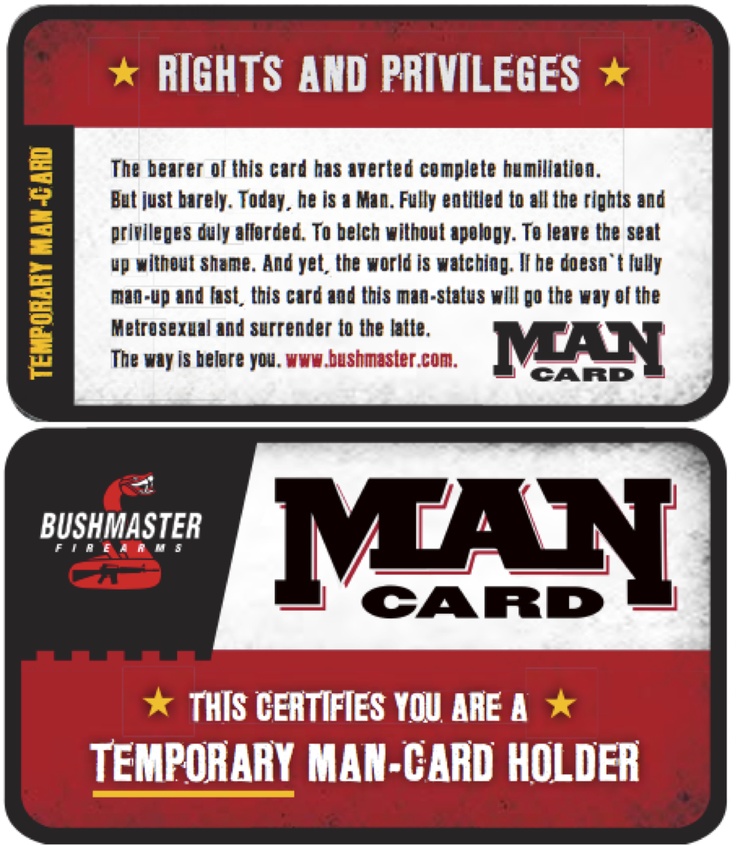
This immunity is thanks, in no small part, to the Protection of Lawful Commerce in Arms Act (PLCAA), passed in 2005, which protects firearms manufacturers and dealers from being held liable when crimes have been committed with their products.
A month before the landmark Remington case was settled this year, an Illinois gunmaker Wee 1, unveiled its latest product — the JR-15 — complete with cartoon skull & crossbones mascots with pacifiers in their mouths.
The marketing copy tells parents "get 'em one like yours" and promises the lightweight rifle "looks, feels, and operates just like Mom and Dad's gun." The ads are no longer online.
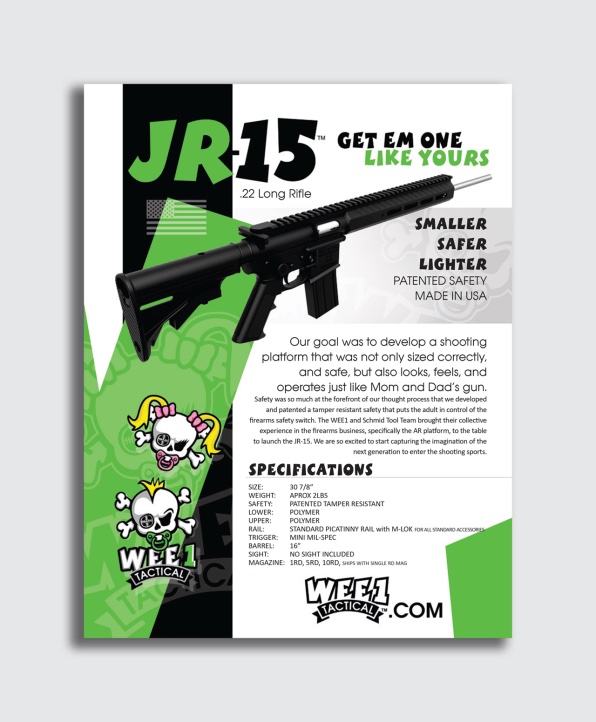
But this doesn't mean gunmakers are done marketing to kids. They're just getting more creative.
In an article targeting firearms dealers, gun shops, and the shooting sports industry, in general, "5 ways firearm retailers can advertise online without Facebook ads," one marketing company sings the praises of influencer marketing as a backdoor into selling guns on social media without selling guns on social media. The article states:
"Thanks largely to Instagram, it’s now easier than ever for lesser-known individuals to build a niche, yet significant audience and become influencers in their own right. Micro- and Nano-Influencers are extremely cost-effective and open up influencer marketing opportunities for shooting sports brands of all sizes.
Another great tactic for digital marketers in the shooting sports industry is to partner with influencers to “white label” ads through the influencer accounts. While gun manufacturers and retailers can’t directly run ads on Facebook and Instagram to sell firearms, influencers can pay to promote their content that reviews a firearms product but doesn’t link to a website where guns and ammunition are sold. This strategy is incredibly effective and every marketing leader in the shooting sports industry should consider it.”
Gunmakers now realize they can sell to kids through other kids — "shooting sports" influencers who wear brand logos like their parents might have worn the local plumber's name on the back of their Little League shirts.
Using hashtags like #SponsoredShooter, the youthful rising stars of shooting sports — some who haven't even reached preteen years — post pictures of themselves on Instagram cleaning guns, proudly holding rifles, and thanking their many sponsors for free merch and big checks.
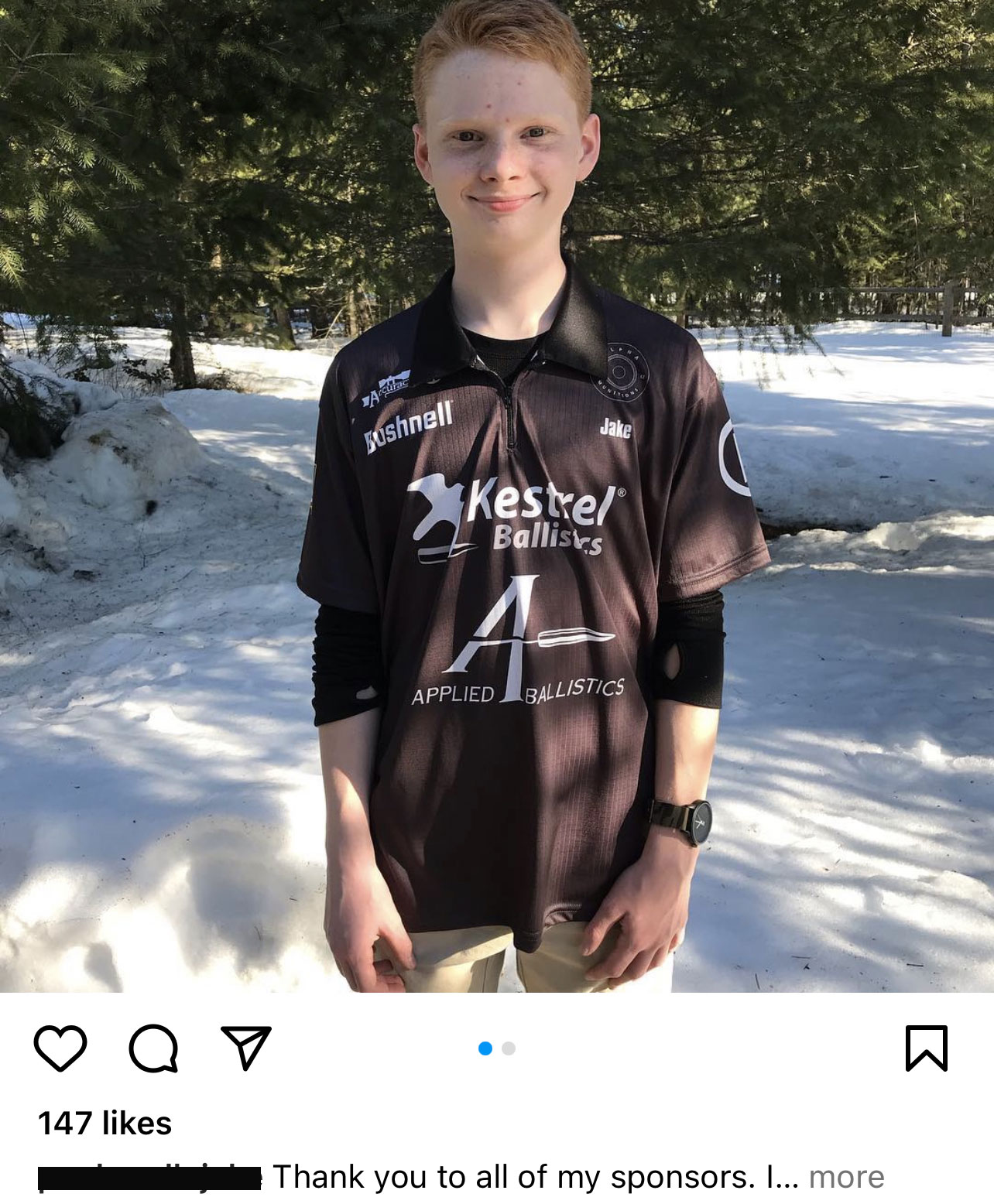
Then, they take to YouTube, where they sing the praises of their "white labeled" yet still fully sponsored semi-automatic weapons.
One YouTube shooting influencer said in a video:
"We have got to stay on YouTube because this is where the masses are coming. I’m telling you guys all over the place, people tell me all the time: “I got on YouTube, I saw a gun video, I was like, oh, I hadn't even thought about guns in a long time.” Before long they were watching different gun videos. They went out and bought a gun. They got to concealed carry. They joined the NRA, or GOA, or whatever. They became second amendment activists. If I go to Full30, I’m just preaching to the choir."
But while the links between gun marketing and masculinity are hundreds of years old, the crisis in this country and the February 2022 Remington lawsuit is pushing gunmakers into a new frontier of gun marketing...women.
If firearms manufacturers are going to keep growing their market, they know they're going to need women on board — moms, specifically.
There has been a substantial increase in gun marketing targeting women, positioning guns as both masculine and feminine.
Owning a gun makes you a "mama bear" who is ready to protect her young.
A Mother's Day from Vortex Optics features a mother and her daughter, enjoying time together with their rifle, much like Winchester's 20th century ads of dads and lads.
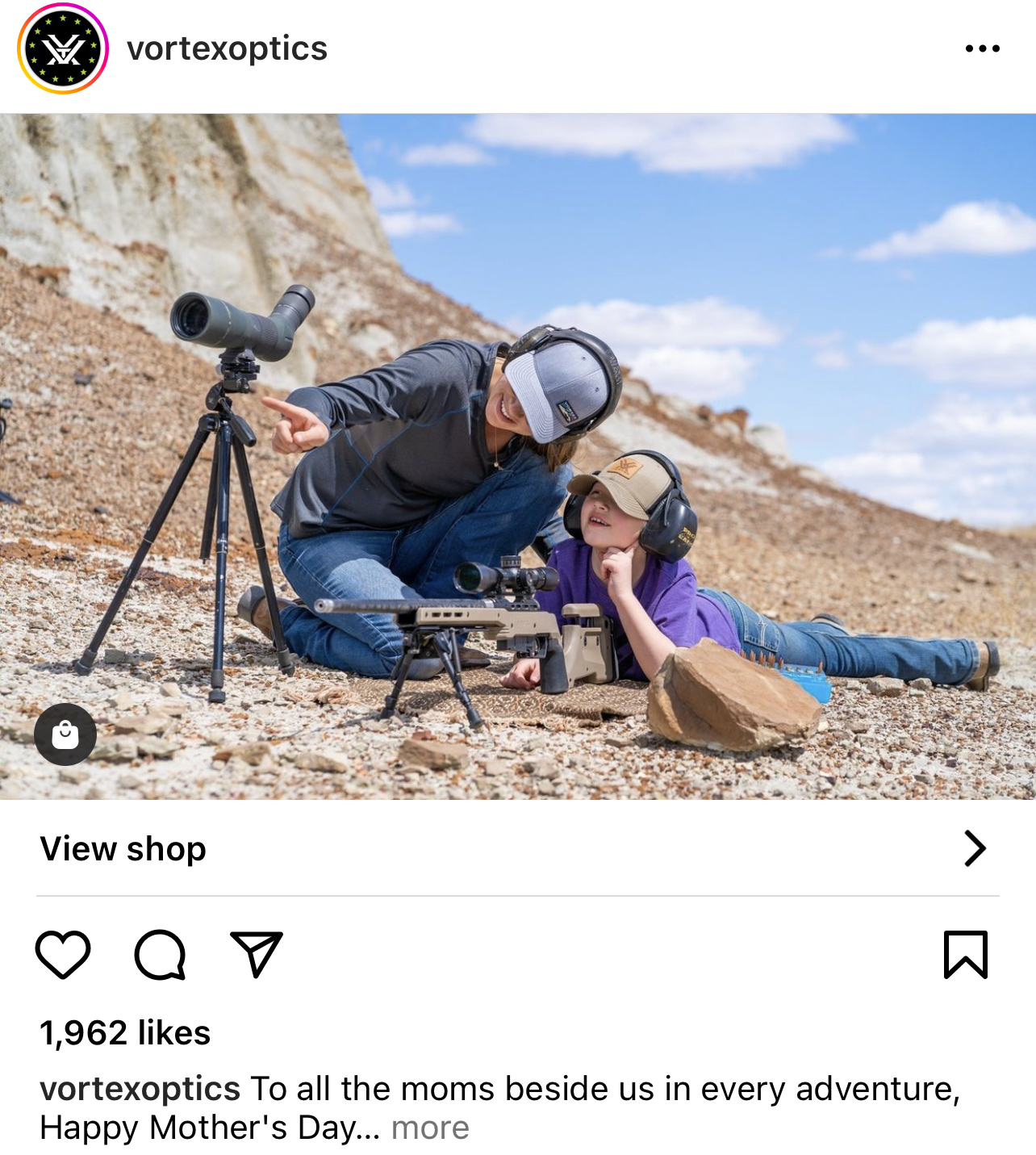
Piggybacking on the national debate around reproductive rights, some gun influencers on YouTube tell women fearful of sexual assault and unwanted pregnancy that a gun is the best way to protect herself from both.
Combine this with lightweight, plastic guns in an assortment of rainbow colors and we're looking towards a future of guns marketed as "cute" and "stylish" accessories for a girl's night out.
Or, as this ad from Athlon Optics shows, amidst pastel streamers atop a bed of spring grass, the perfect way to fill Little Madison's Easter basket.
If you’re asking yourself, “What do I do?” there is political change to be made and the consumer protection route is an important approach, as well.
We might not be able to get lawmakers to do what we want — but we can approach activism through the commercial angle.
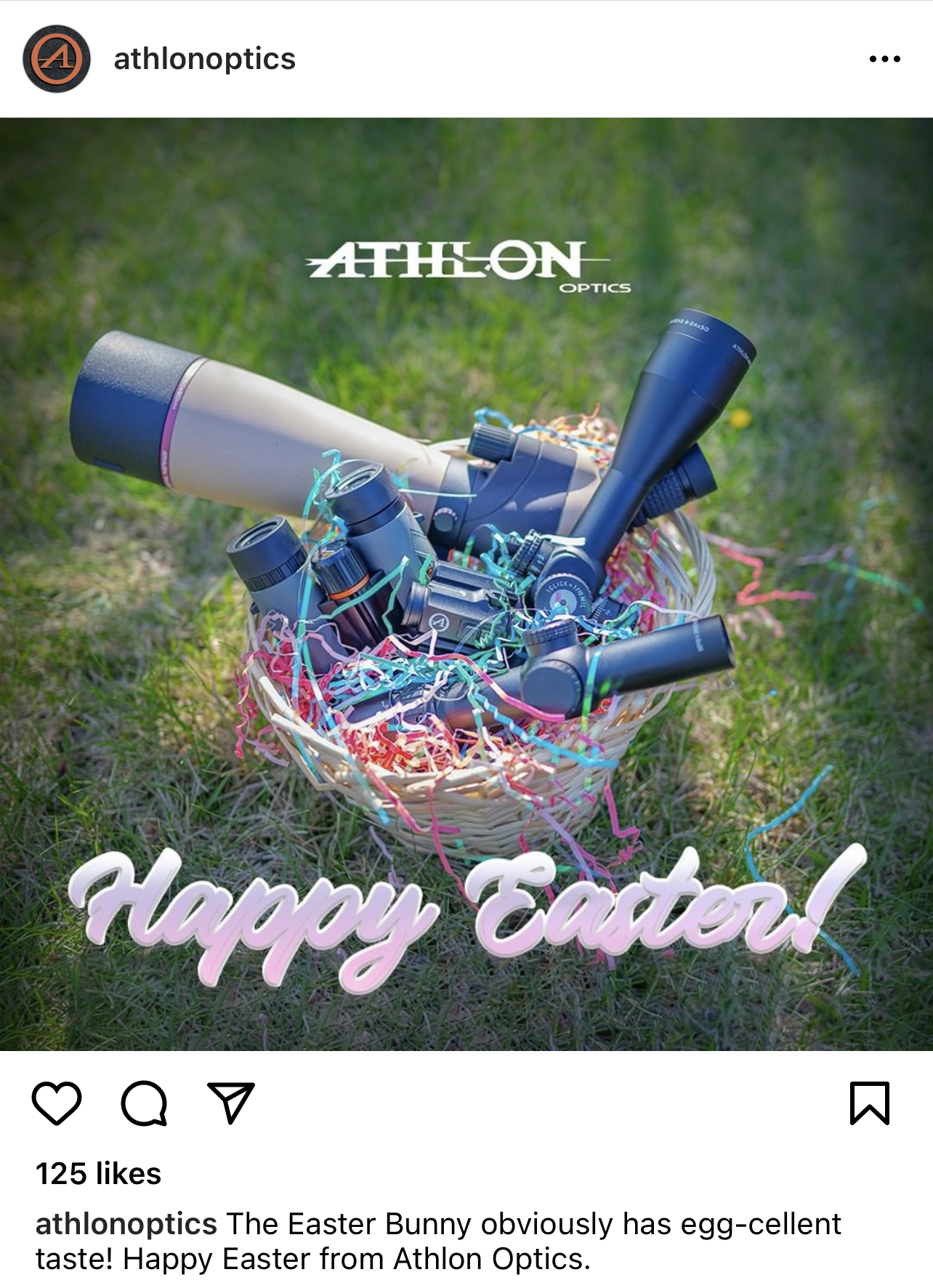
Today’s firearms manufacturers use influencer marketing and “white label” ads through young people in the Creator Economy — on social media and on YouTube.
We can demand legal changes.
But we can also demand that gunmakers stop sponsoring kids with brand deals so they’ll promote their guns to young audiences.
The February 2022 Remington lawsuit showed us that, while gunmakers, the NRA, and the National Shooting Sports Foundation — the biggest financial contributor to gun lobbies — will continue pumping money into laws that keep guns unregulated, consumers and people impacted by gun marketing can fight back another way.
If capitalism is what did this to us, let's use capitalism against itself to prevent these atrocities from continuing, and at the very least, making it hard for gunmakers to glamorize and normalize guns.
It's time to take our thoughts and prayers and turn them into action.
Sources for this episode:
- Families of Sandy Hook victims reach $73 million settlement with Remington from NPR
- The precarious masculinity of firearm ownership from the American Psychological Association
- Guns, testosterone, and aggression: an experimental test of a mediational hypothesis from the National Library of Medicine
- Start Them Young from the Violence Policy Center
- CT’s historic role in gun marketing from the CT Post
- A brief history of guns in the U.S. from Hopkins Bloomberg Public Health
- Everytown Calls on the FTC to Investigate Smith & Wesson’s Dangerous Assault Rifle Marketing Practices from Everytown
- Characteristics of Gun Advertisements on Social Media: Systematic Search and Content Analysis of Twitter and YouTube Posts from the National Library of Medicine
- How Remington's hyper masculine advertising became its undoing from Mel Magazine
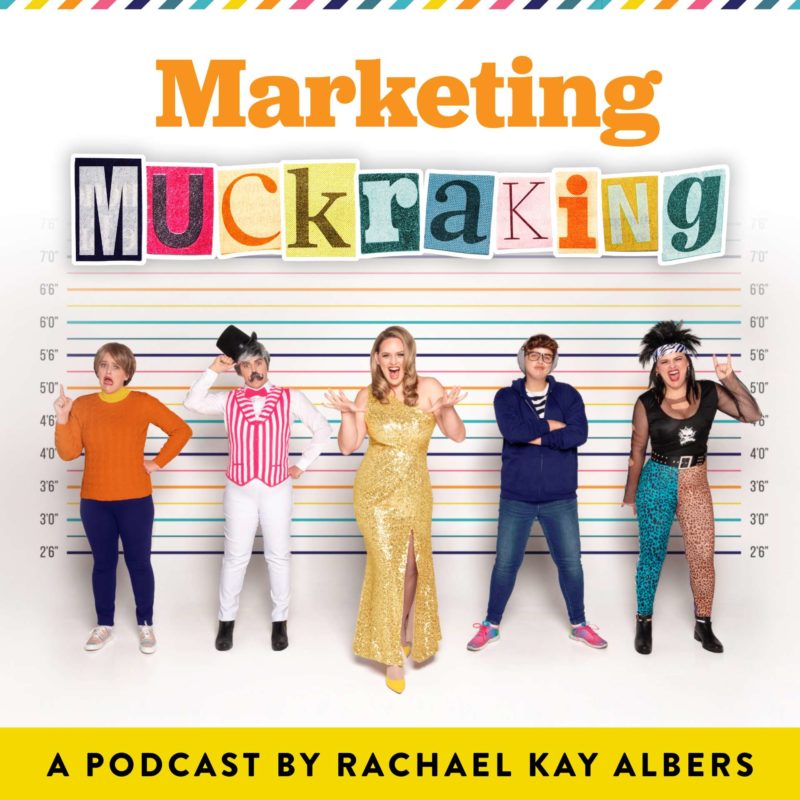
About the Marketing Muckraking podcast
Welcome to Marketing Muckraking, the show that asks not simply what brand culture can do for us, but what it’s doing to us — with your host, creative director, brand strategist gone wild, and the court jester of online business, Rachael Kay Albers — making fun of business and making business fun.
This is the show for rebels, revolutionaries, and renegades who run businesses that burn the rulebook. If you’re sick of business podcasts with all the answers — I’ve got nothing but questions.
Where we swap B School for FREE SCHOOL, easy for honest, and goal digging for marketing in pursuit of meaning.
If you love the show and want to support more marketing muckraking, please subscribe, review, share with your enemies, and if you really want to make my day, you can go to BuyMeARobe.com and leave a little something on the nightstand.
Latest Episodes

I have no freebie to tempt you with.
No automated email sequence to whisper sweet nothings into your inbox late at night.
Here’s what I do have: a hilarious show on how to market with integrity, sell your services & products successfully, and still not take yourself too seriously. Join me here:
